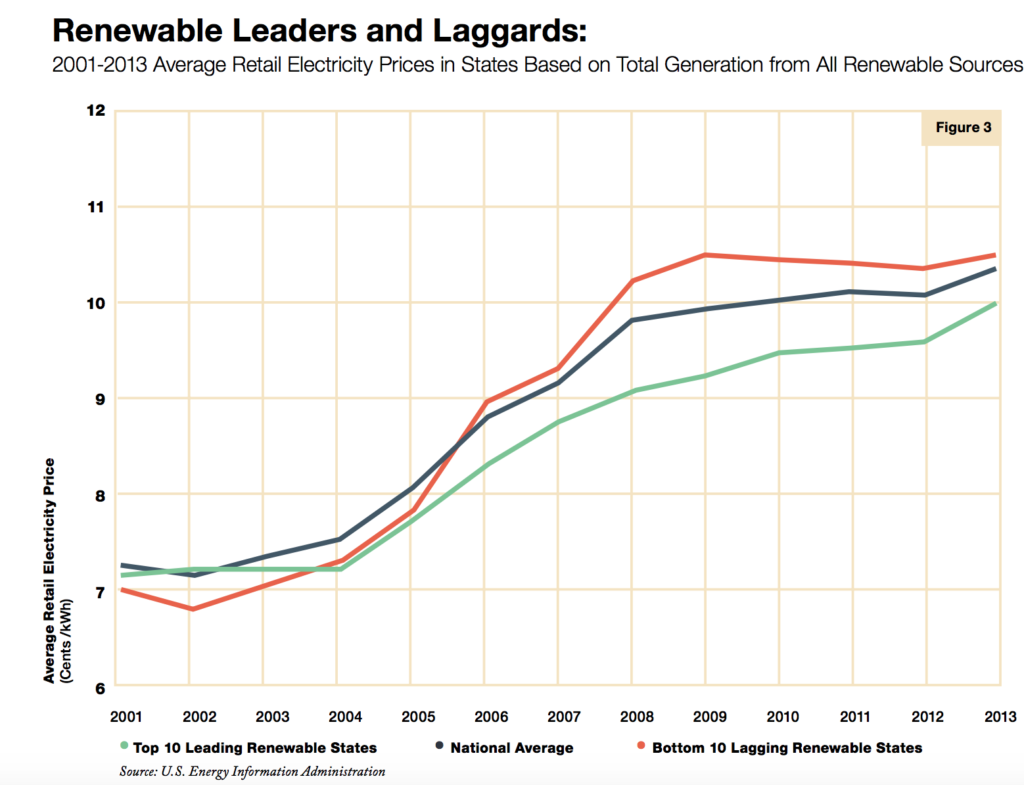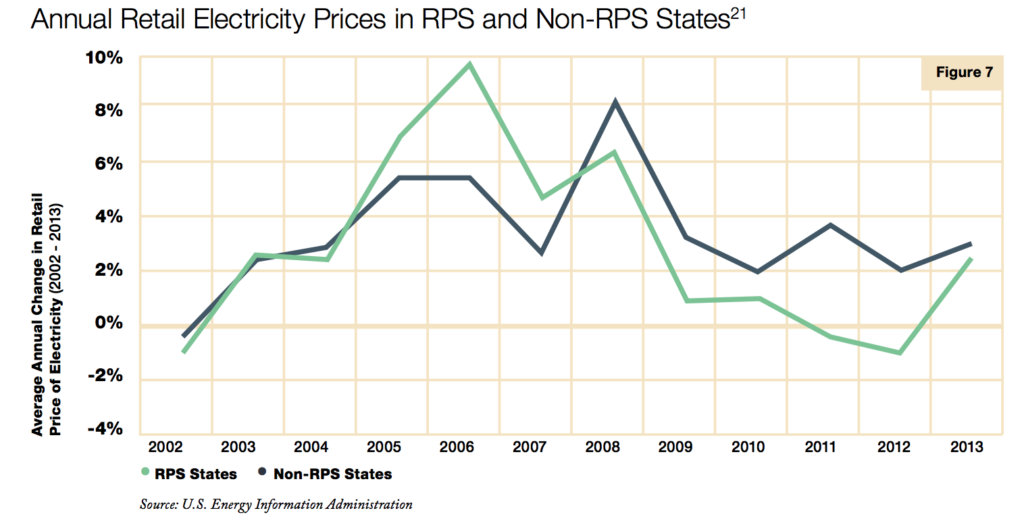The United States’ power mix has evolved substantially over the past 20 years. Regions and states across the country have steadily increased their renewable energy capacity. Nearly half of new, utility-scale, electric generating capacity added to the power grid in 2017 came from renewable energy technologies and aggressive state commitments, such as California’s recent pledge to achieve carbon-free energy by 2045, will ensure that the trend toward a low-carbon (mostly renewable) energy system continues.
Opponents of the transition to renewable energy technologies claim that this technology will burden American families with higher electricity bills, and that policies that support renewable energy amount to an attack on the economy. However, analyzing the relationship between electricity rates and renewable energy growth demonstrates that there is no cause for alarm.
A 2015 study conducted by DBL Investors compares state-level trends in average retail electricity prices to generation from renewable sources, in order to shed light on whether states with more generation from renewables have also experienced higher prices. The paper looks at the top 10 and bottom 10 renewable states, as determined by the share of total electricity generated from all renewable sources. The conclusion is that states with greater reliance on renewables have not experienced dramatically higher retail electricity prices.
The authors found that states with the greatest share of generation coming from renewables has an average retail electricity price of 9.79 cents/kWh in 2013, while the states with the lowest share of generation from renewables averaged 10.28 cents/kWh. The national average price of retail electricity was 10.14 cents/kWh.
Using time series data, between 2001-2013 the average retail electricity price in states that led in renewables improved compared to other states. The figure below demonstrates the price path for the leading renewable states, the national average, and the lagging renewable states.
Prices from the last ten years demonstrate that average retail electricity prices in leading renewable states have increased less than the lagging states and the national average. In 2001, states with the greatest share of renewable energy generation were experiencing average prices that were .15 cents/kWh more than the bottom 10 renewable states. By 2013 the average electricity price in top renewables states was .49 cents/kWh cheaper than the average price in lagging regions.
In order to get a more comprehensive understanding of whether these trends reflect policy choices or the market simply acting on the falling costs of renewables, it is worth comparing the relative prices in states that have adopted Renewable Portfolio Standards (RPS) with non-RPS states. 38 states have adopted RPS policies, In 2007, RPS states had an average retail electricity price that was 2.2 cents/kWh higher than in non-RPS states (when renewable energy technology was far more expensive then it is today),. In 2013, that price discrepancy dropped to .09 cents/kWh, even as more states established RPS programs and ramped up their existing programs.
End to end, the figure above demonstrates that RPS states experienced price increases of 3.02%, while non-RPS states experienced a 3.52% of price increases.
The economies of scale and drastic cost reductions being realized in the renewable energy industry are at the core of the trends described above, and these costs likely to continue dropping in the future. Renewable energy technologies are taking off, and concerns that they will kill American competitiveness and over-burden the pockets of American families have been blown out of proportion. Considering the costs of inaction towards climate change, I would argue that it is much more likely that the energy transition towards a renewable energy-based system will do more to save the American economy than destroy it.

